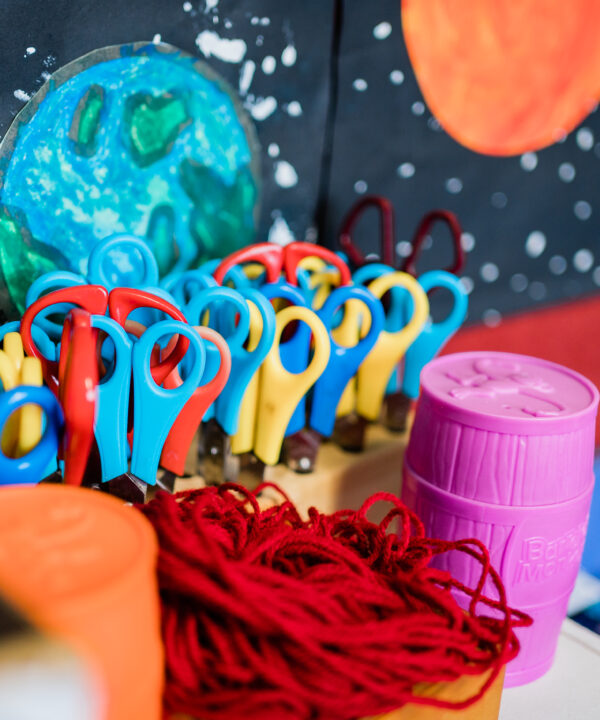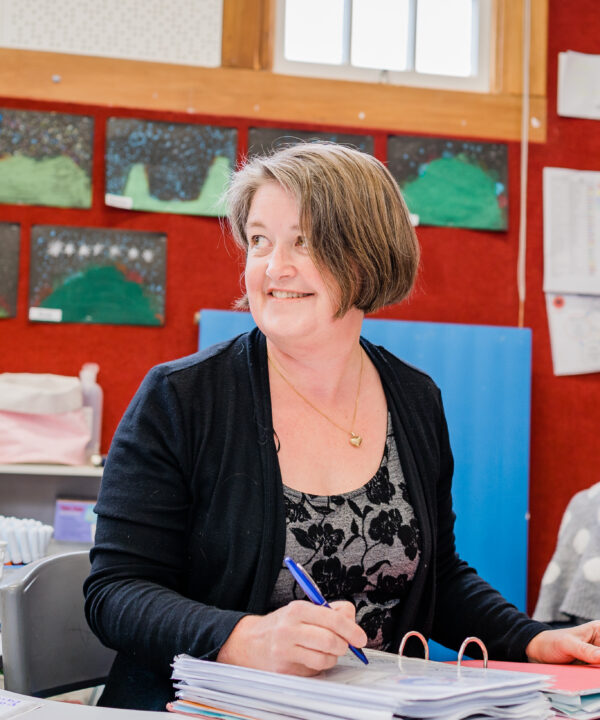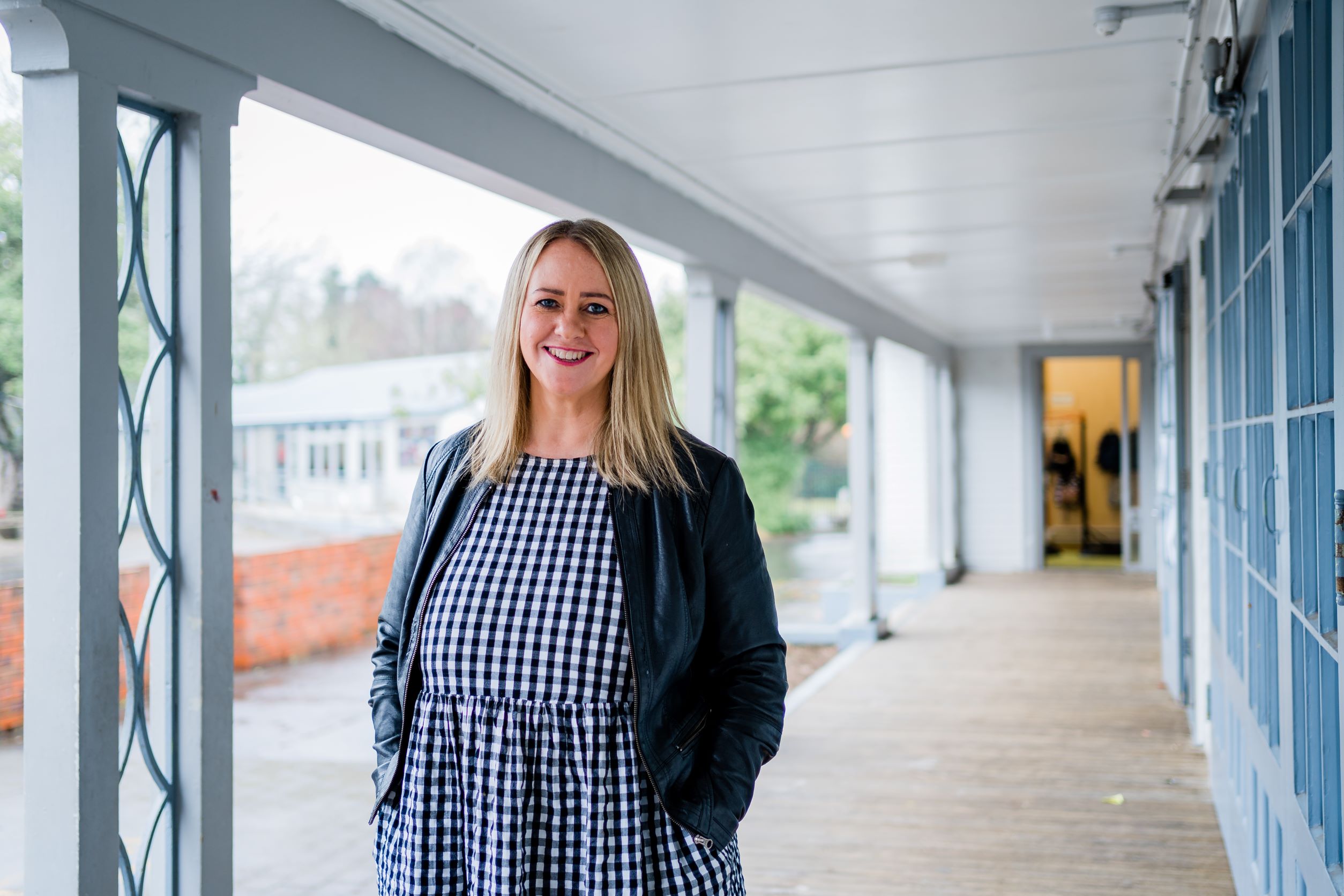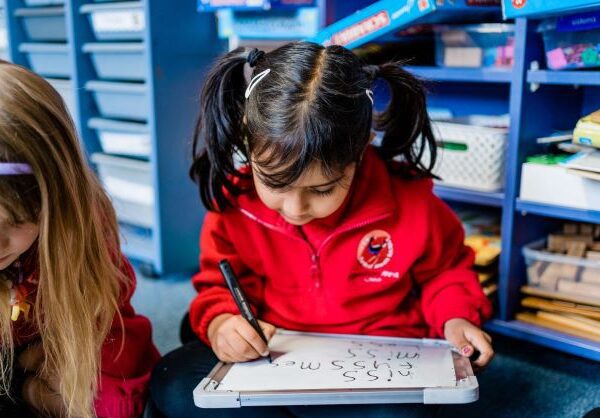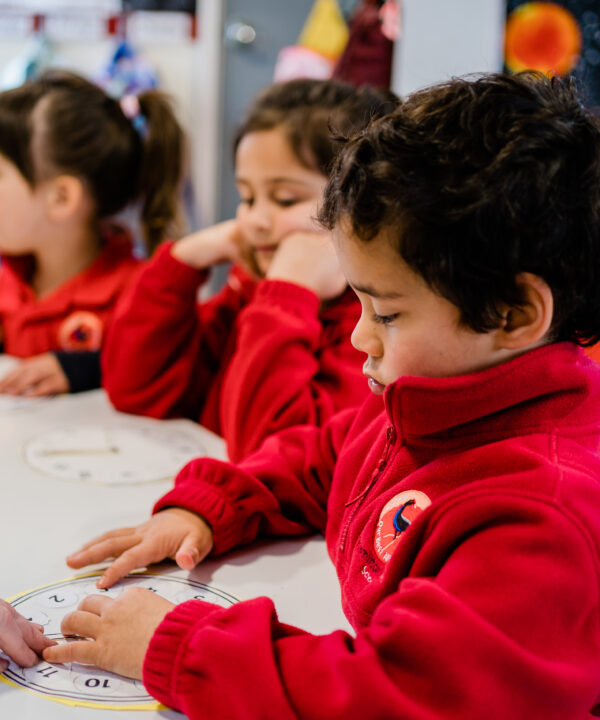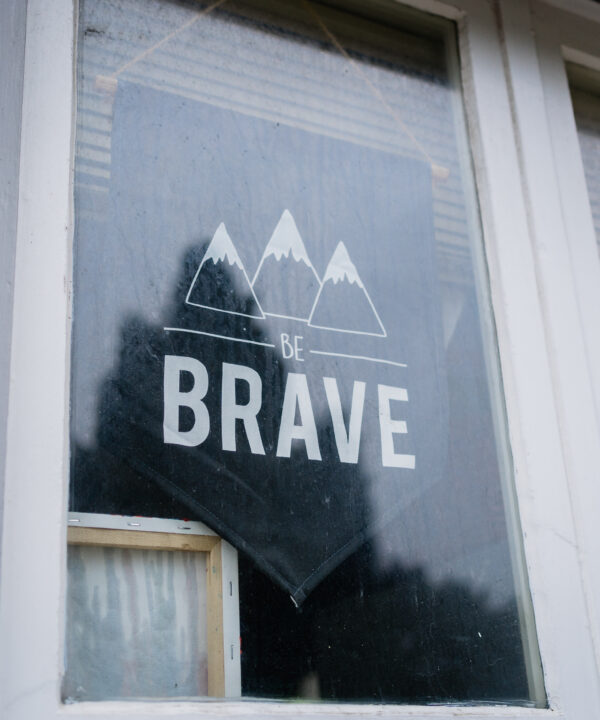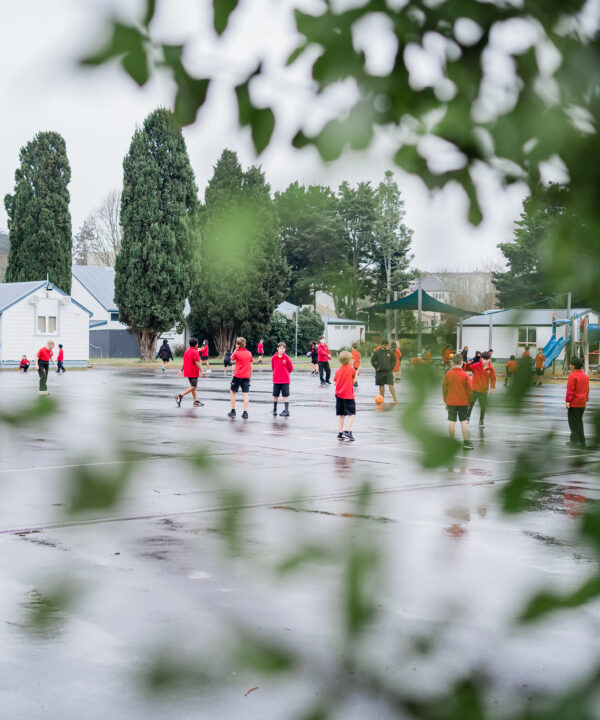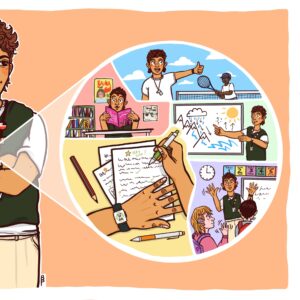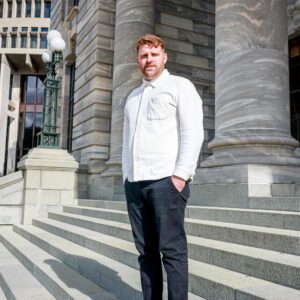Joanna Martinez is almost there. After five years of study and apprenticeship she will graduate later this year as the qualified teacher she has long dreamed of becoming.
“I was a Mum with teenage kids and a heap of life experience when I took the plunge,” says Martinez. “I enrolled in a three-year Bachelor of Teaching course because it was the shortest route to the classroom. Now I’m most of the way through my period of provisional certification, with my own class of little people and I’m loving it.”

Martinez’s account of her journey through initial teacher education is largely positive. Her university classes were taught by approachable, experienced educators and her start as a teacher, while tiring, has been filled with support.
“Our school handles the provisional certification period really well,” she says. “I’ve had lots of support and guidance. Whenever I have had a question or needed help it’s been there. My release time has been a bit patchy this year with all the COVID sickness, but mostly I have had the time out I’ve needed to plan and assess.”
“Nothing teaches you to teach like teaching, but alongside that, mentorship is really important. You don’t know what you don’t know.”
While Martinez is enthusiastic about her own experience, she acknowledges that it has not been that of all new educators. She knows of some who withdrew during the university phase and of others who have struggled in their new school. She enjoyed many of her university classes but believes that most new teachers feel quite unprepared to start their first job, because they have had too little time in schools with quality associates.
“Nothing teaches you to teach like teaching,” she says. Then adds: “But alongside that, mentorship is really important. Once you have your own students you have to feel supported by colleagues and know there are no stupid questions.” You need people checking up on you.
“You don’t know what you don’t know,” says Martinez.
***
Jaimi Cook* repeats this exact phrase when describing her difficult new teacher journey. She felt apprehensive when she finished her one-year postgraduate diploma and started in her first school.
“There was so much I didn’t know and I felt like I hadn’t spent enough time in the classroom. But I told myself that everyone starting out must feel like this. I’d done fine at university, passing all my practicums, so hoped I would learn quickly and gain confidence once I was teaching.”
Unfortunately, that didn’t happen. Cook found herself teaching a class of 30 students in her first year, then 32 in her second. Both classes included students with high learning and behaviour needs and Cook struggled.
“At times I felt I was not helping my high needs kids at all. I felt terrible for them, but I had 30 others who needed my time as well.” What advice she received from her mentor didn’t really help and Cook was unable to access professional help from the Learning Support Co-ordinator at the local Community of Learning.
To make matters worse, she was drowning in workload. Highly streamed classes made it difficult for her to collaborate with colleagues in planning and resourcing. She worked long hours, including nights and weekends, but it didn’t get easier. Instead, it became harder when management cancelled all release time because of COVID-19.
“I felt alone a lot of the time,” she says. “At first, I had a supportive mentor but then she was replaced with senior staff member who simply didn’t have time to help me. I needed time to talk things through and have a lot explained, but we only met one lunchtime a week which then became a two-weekly meeting.”
Looking back Cook recognises that she and her mentor were not a good fit. She wishes senior management had checked how things were working out, but they didn’t.
“With a term and a bit to go before the end of my two years as a PCT [provisionally certificated teacher], I decided I had to get out,” she says. Her confidence was gone, she was exhausted and her personal life had been damaged.
Despite advice from others that she should try another school, Cook walked away from her career, thinking she would never teach again.
***
Stories of success and failure in our initial teacher education (ITE) system are something NZEI Te Riu Roa President/Te Manukura Liam Rutherford has heard aplenty.
“There are pockets of great practice across the country,” he says. “But they don’t significantly change the national landscape. Overall, we are not doing well. We hear story after story of new educators unprepared and poorly supported to be whole class teachers and many of them leave. That’s a real shame for them and a waste of significant investment.”
“Great teachers are made by the great experiences they have.”
Rutherford is not alone in identifying shortcomings of ITE. In response to disquiet in the profession the Teaching Council/Matatū Aotearoa, which oversees ITE, has recently amended the requirements for accreditation of ITE programmes. Entry requirements for students have been tightened and courses are now required to place greater focus on The Code/Ngā Tikanga Matatika and The Standards/Ngā Paerewa.
Rutherford endorses the changes but believes much more needs to be done.
“We won’t know the impact of the Council’s changes in programme design and accreditation for a while, but really, if we are to properly address the problems in ITE, we have to undertake major systemic change,” he says.
Alongside ITE sector experts, Rutherford recently launched ITE 2040, a NZEI Te Riu Roa discussion paper which advocates a reimagining of how we grow new teachers.
The reformed ITE landscape the paper envisages would see the profession taking a leading role throughout the process. No longer would schools, kura and centres be responding to the expectations of multiple ITE providers. Rather, they would enter genuine partnerships with providers, having strong input into course design and delivery. To achieve this, they would need to be adequately funded and staffed, perhaps in the same way normal schools are currently resourced.
Andrew Bird who is President of the Normal and Model Schools Association (NAMSA) and Principal of Kelburn Normal School agrees.
“As a Normal School we have additional staffing that enables us to support both the students coming into our school and the Associate teachers who collaborate with them,” says Bird. “We have a staff member who manages the relationship with the provider and acts as an on-site lecturer. Other schools, partnering with providers, don’t get that kind of resourcing but they should.”
Both Bird and Rutherford believe there is a need to strengthen the Associate Teacher role.
“We can no longer work on an assumption that because they are good at teaching children, educators are automatically good at teaching adults. The research shows otherwise,” says Rutherford. “The concept of coaching is well regarded, and we ought to be providing pathways for those working with new educators to develop coaching skills.”
Bird agrees that such training is critical. “There needs to be a guaranteed level of quality there. If you are involved in someone’s tertiary training, you ought to have expertise,” he says.
While there are significant issues around pre-service ITE, there is also concern that the two years of provisional certification that follows is not working for many new educators. Andrew Bird says we should not be surprised by this. Most PCTs come into their first teaching job with limited school experience and predictably, they struggle.
“They come knowing quite a lot, but they haven’t had the practice. Yet they’re expected to be ‘ready to teach.’ Somehow, they are supposed to have a good understanding of pedagogical theory, knowledge of the curriculum, a good handle on neurodiversity, tikanga, te reo and more. And there’s no “L” sticker on their classroom door.”
Bird says that the key to success, in most cases, is strong mentoring, but schools and centres vary in how effectively they do this.
Joanna Martinez’ Hamilton West School commits resourcing to supporting new teachers.
“We want our beginning teachers to be the best they can be, so that our students thrive,” says Principal Mark Penman. “We have a senior staff member who has .5 of her time dedicated to overseeing the mentoring of PCTs. She’s regularly in their classrooms observing and supporting new teachers and the colleagues who work with them. It’s important to have someone with overall responsibility for mentoring. We have found that works really well.”
Both Penman and Martinez point to a professional culture in which newer teachers are encouraged to seek support and ask questions of colleagues.

“Our approach is about growing the profession,” says Penman. “We like it when our young teachers succeed because it helps our students, but we also enjoy it when they take what they have learned here to new roles beyond our school.”
***
Meanwhile, in Central Otago, schools have banded together to improve support for provisionally certificated teachers. The PCT Network, which was begun eight years ago to combat the geographical isolation of new educators, receives funding support from NZEI Te Riu Roa and the local Principals’ Association.
“In recent years we have had 20-25 PCTs participating,” says Wendy Bamford, Principal at Wanaka School and network co-ordinator.
“Our new teachers meet once a term for a full day session. There’s input around certification and their rights as a PCT, as well as PLD [professional learning and development] in a range of topics that might include anything from behaviour management to structured literacy.”
The new teachers share their experiences and there is always some expert brought in to run a workshop.
“We try to expose our new teachers to experts in our area so they can build their professional network,” says Bamford.
Just as importantly, members of the group stay informally connected between meetings, by text, email or visits to each other’s classrooms.
“The impact on our PCTs has been significant,” says Bamford. “They understand the certification process much better than our previous new teachers did, and the informal networks that have grown have helped them settle into the area.”
Rutherford believes that for all schools to support PCTs effectively there needs to be additional funding and proper career pathways and training for mentors. Of utmost priority however must be the extension of the current primary PCT staffing release to ECE.
“We’re coming across experienced ECE teachers who are having to give support in their own time,” says Rutherford. “They are doing this without pay, because they have no non-contact time available to work with their colleagues. The need to act is urgent.”
***
A central issue addressed in ITE 2040 is how our system of Initial Teacher Education addresses Te Tiriti o Waitangi. The writers look forward to a future in which Māori play an integral role in governance of an ITE system that supports both ‘by Māori for Māori’ approaches, as well as mainstream programmes that prepare educators to meet the needs of Māori students.
The Teaching Council recently established a new framework for Māori medium ITE, designed and developed by ITE Arareo Māori experts. Five ITE Arareo Māori programmes have since been approved, with a further seven awaiting approval.
For mainstream ITE programmes the new emphasis on The Standards/Ngā Paerewa, means that graduating students should begin teaching with a commitment Te Tiriti o Waitangi, te reo and Tikanga Māori. The challenge is for intention to become a reality.
“It’s no use saying you want two thirds of children able to speak Māori in 50 years’ time, if you’ve not got the teachers to do it.”
“We have to move beyond tokenism,” says Bruce Jepsen, President Te Akatea/New Zealand Māori Principals’ Association. Speaking in a NZEI Te Riu Roa webinar he calls for ITE to be indigenised and decolonised so that future teachers value Māori ways of being and thinking.
“There has to be a focus on helping student teachers understand that prior to the arrival of Pākehā, Māori had complex economic, political and social systems,” he says. Jepsen advocates for ITE that gives students opportunities to learn about Mātauranga Māori while scrutinising colonial ideologies that uphold current disparities.
***
Professor of Māori and Indigenous Education Huia Jahnke agrees there needs to be more focus on preparing students to work with Māori.
“We have excellent, well-meaning students, many of whom have never had a lot to do with Māori people, and yet we expect them to go into classrooms and engage with Māori learners and their families.”
Jahnke has led the development of Massey University’s Te Aho Tātairangi, Aotearoa New Zealand’s first university qualification in Māori-medium initial teacher education. It was co-constructed with Te Rūnanga Nui o Ngā Kura Kaupapa Māori o Aotearoa, the governing body of Kura Kaupapa Māori, and forefronts Te Aho Matua, a distinctively Māori approach to teaching and learning.
“Te Aho Matua is the only educational philosophy to come from Aotearoa New Zealand,” says Jahnke. “All other ITE programmes borrow from philosophies developed overseas. When we developed both Te Aho Tātairangi and our oneyear postgraduate programme Te Aho Paerewa, we decided that we really needed to break away from a Western mainstream approach.”
“Working in Kura Kaupapa is not a profession, it’s a way of life.”
That means that course delivery is completely in te reo and students are immersed in the Te Aho Matua philosophy.
“Working in Kura Kaupapa is not a profession, it’s a way of life,” says Jahnke. “Most of our graduates will be teaching in their own tribal areas. They will be related to most of their students and the kura will be deeply imbedded in the community. Many of them will be principals sooner rather than later.”
Students undertake both programmes from around the country and courses are delivered online with regular hui-a-rohe run by visiting staff as well as compulsory wānanga each term. The blended approach allows students to maintain their whānau commitments while establishing strong relationships with academic staff and their student colleagues.
“It involves a lot of hard work from staff because we don’t have the resources that there are in ITE mainstream,” says Jahnke. Such resourcing and infrastructure come from many decades of operation.
“We have to keep reminding ministers that, it’s no use saying you want two thirds of children able to speak Māori in 50 years’ time, if you’ve not got the teachers to do it.” As previously noted, a prominent concern of both new educators and the profession is that most ITE courses provide limited pre-service classroom experience. There are, however, courses which specifically seek to address the issue.
***
EIT (Eastern Institute of Technology) produces a steady stream of early childhood teachers. The Bachelor of Teaching course, which operates out of Taradale with a satellite in Hastings, attributes its success to a local focus and a mix of field-based and on-campus study.
“Students come to us because they want to stay close to their community, but also because they see the value of spending close to 50 percent of their study time in a centre or kindergarten,” says Programme Co-ordinator Tania Du Plessis. “They really appreciate the field-based approach. It allows them to engage with theory on campus part of the week, then put it into practice in a centre or kindergarten over the rest of the week. The students are assessed around that.”
The approach has a strong inquiry focus which Du Plessis says strengthens the outcomes for students. “By the time they enter employment, our graduates have had three years of focussed experience. Students appreciate that, as do employers who’ve often already developed working relationships with them.”
Another seasoned ITE provider for early childhood is Te Rito Maioha. They deliver a bicultural, field-based programme in ECE and have recently developed a similar approach to primary teacher education.
“We found strong demand, particularly in rural areas,” says Anthony Fisher, academic leader of Primary Programmes. “There are many people in these communities who have the desire and ability to be great teachers, but for financial or family reasons can’t leave the area to qualify. Often, they’re already working in schools, perhaps as teacher aides or sports coaches. Many apply for our programme with the support of their employer.”
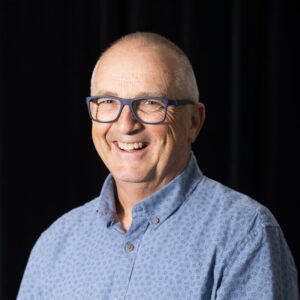
The course design suits these people. They spend two days a week in the field, often in their local school. They are mentored by an associate at school and complete the balance of their study on-line, under the guidance of academic tutors.
It isn’t just rurally based students who have enrolled in this blended style of learning. Melissa Hawke, who hails from Mosgiel, had already tried campus-based study but changed to the Te Rito Maiaho Bachelor of Teaching degree.
“It just suits my style of learning,” she says. “I learn so much in the two days in the field and the on-line learning works really well for me. Even though you are learning at a distance you get to know the others in your cohort and keep in touch with them regularly.”
The course has enabled Hope Sherrard-Chase to fulfil her long held dream of training as a teacher. “As a mother of two young children this course makes learning more accessible,” she says. “Being able to work online, rather than travel to university, makes my life easier. The flexible delivery allows me to fit study around my other responsibilities.”
New Plymouth Principals’ Association Chair, Brigitte Luke was part of the group that helped design the course. Initially they undertook research into what principals and school communities required from an ITE programme.
“Principals wanted graduates who were ready to teach. They were keen that new teachers not only know the theory but are ready to apply it practically in the classroom,” she says. “For instance, they wanted an ITE programme where professional standards are integrated throughout and unpacked through classroom experience. I think we’ve achieved that.”
Second year student Rachel Fox agrees that the parallel streams of field and academic study reinforce each other.
“You can see the theory unfold in the classroom and you’re able to discuss it immediately with your teacher colleagues. Right from your first year you get the opportunity to learn how a school works, discover who you are as a teacher and what you can bring to the classroom.”
Principals who were surveyed expressed strong support a programme that had a genuine partnership between schools and the provider.
“That included course design,” says Fisher. “And I think that’s been one of the strengths of our programme. The fact that we have practitioners involved in writing the course ensures that it reflects the realities of what’s happening in schools.”
“Students do practicums in schools other than their base school, but on graduating the majority get employment within their own communities,” says Fisher. “That’s a huge boon for areas which are hard to staff.”
“It has been wonderful to see,” says Brigitte Luke. “In particular it’s gratifying watching talented Teacher Aides go on to become teachers and remain in the education system.”
***
POSTSCRIPT: When Jaimi Cook walked away from teaching in 2020, she had no intention of returning. Nevertheless, after a year’s break a friend convinced her to step into a relieving job at her school.
“She persuaded me that my first experience wasn’t typical and that I would be looked after where she was teaching. I gave it a go.”
It was very different experience. Cook found herself teaching a smaller class and able to plan collaboratively. There was a school wide system for mentoring new teachers and she felt valued. She began working towards registration again and it seemed so much easier.
“I felt trusted and able to ask for help. My mentor and I got on well, the team leader and senior management took an interest. I had time to work on resources.”
Cook has since graduated and continues to teach in her new school. She knows she has things to work on if she is to become the teacher she wants to be, but senior colleagues are helping her to achieve that.
“There’s an old saying that teachers are born, but that’s mostly untrue,” says Andrew Bird. “Great teachers are made by the great experiences they have. What we have to focus on is creating environments for our new teachers that give them best possible experiences. It concerns me that so many good new teachers are chucking it away and leaving the profession. That doesn’t have to happen if we get ITE right.”
*Name withheld by request.
